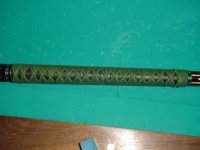absolutely no apology needed
Sean,
Absolutely no apology needed. A complicated sentence but I never thought you thought I didn't know who Jimmy Moore was; I just thought I would remember if it was Jimmy. Can't remember ever seeing him play in person but I enjoyed him on TV.
Blackjack sent me a little short clip or a link to something he was editing, I forget which. It wasn't the whole tribute. Once I saw his name, I'm almost certain it was Pat Howey in the video. I went back and read through a bunch of Pat's posts after his name was mentioned yesterday, good reading!
I finally found video showing a slip stroke pretty well and posted it above. Wayne uses a variety of strokes though so there is more than just a slip stroke shown.
Hu
Hu:
Apologies I noticed this only now. Also apologies if my post implied you didn't know who Jimmy Moore was -- of course I know you do. Sometimes in the spirit of giving away information ("what's mine, is now yours" is my credo in life), me fleet fingers get carried away, channeling the thoughts to the written text on the screen.
Yup, I do remember that Blackjack tribute video to Pat Howey -- that's the one you were thinking of, no?
-Sean
Sean,
Absolutely no apology needed. A complicated sentence but I never thought you thought I didn't know who Jimmy Moore was; I just thought I would remember if it was Jimmy. Can't remember ever seeing him play in person but I enjoyed him on TV.
Blackjack sent me a little short clip or a link to something he was editing, I forget which. It wasn't the whole tribute. Once I saw his name, I'm almost certain it was Pat Howey in the video. I went back and read through a bunch of Pat's posts after his name was mentioned yesterday, good reading!
I finally found video showing a slip stroke pretty well and posted it above. Wayne uses a variety of strokes though so there is more than just a slip stroke shown.
Hu

